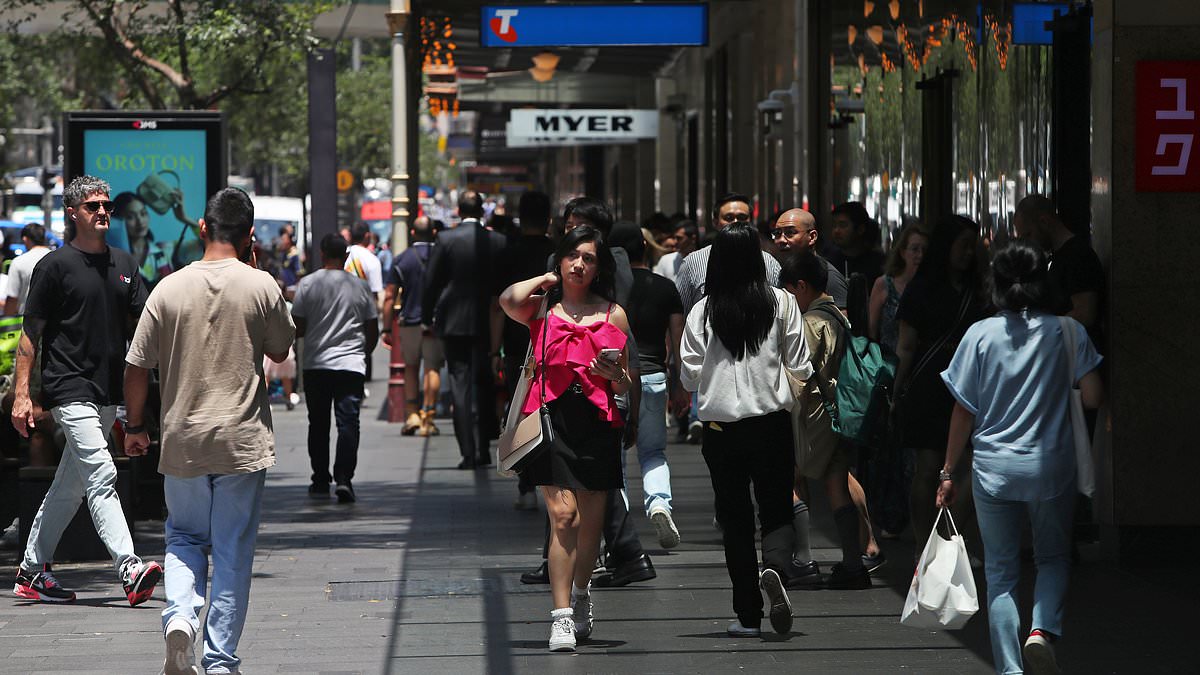Aussie borrowers could miss out on a July rate cut with inflation failing to moderate.
While inflation is within the Reserve Bank’s two to three per cent target, new monthly figures for April showed underlying price pressures getting worse.
This could stop the RBA from providing relief at its July 8 meeting, as it instead waits for more comprehensive quarterly consumer price index data at the end of that month.
The Reserve Bank’s preferred trimmed mean measure of inflation showed prices rising by 2.8 per cent over the year to April, up from an annual pace of 2.7 per cent in March.
This increase, excluding volatile price items, means the next rate cut is more likely at its August or September meeting, as RBA Governor Michele Bullock assesses the effects of Donald Trump’s tariffs on economic growth.
EY chief economist Cherelle Murphy said the RBA was likely to wait before easing rates again.
‘The Reserve Bank will be more focused on the comprehensive quarterly CPI reading for June, which will be released at the end of July,’ she said.
‘The Reserve Bank is likely to deliver further monetary easing having cut rates twice by 25 basis points so far in this easing cycle, given the upside risks to inflation have largely disappeared while global policy uncertainty remains elevated.
‘The extent of the cuts will depend on how trade policy and geopolitical frictions impact the global economy and business investment and consumer decisions.
‘We expect at least another two 25 basis point cuts this year, with possibly more over 2026.’
Education costs went up by 5.7 per cent while fruit and vegetable prices rose by 6.1 per cent in the latest monthly inflation data from the n Bureau of Statistics, released on Wednesday.
Tobacco had the biggest increase of 12 per cent with cigarette prices indexed for average wages at the start of March.
Housing inflation is still an issue in with rents up five per cent over the year as heath costs rose 4.4 per cent.
Headline inflation was steady at 2.4 per cent, factoring in a 12 per cent drop in petrol prices and a 6.5 per cent fall electricity bills thanks to $75 quarterly government rebates that have been extended until the end of the year.
Treasurer Jim Chalmers noted that headline inflation had been within the RBA’s two to three per cent target for the ninth straight month while underlying inflation had been in the band for the fifth consecutive month.
‘We know that these monthly numbers are volatile and can bounce around but the direction of travel on inflation is clear,’ he said.
‘Another month of CPI in the band is a welcome and encouraging sign that inflation is moderating sustainably.’
The Reserve Bank this month cut interest rates for the second time in 2025, taking the cash rate to 3.85 per cent for the first time since June 2023.
The futures market sees the RBA cutting rates to 3.1 per cent by the end of 2025, which would see the cash rate at the lowest point since February 2023.
Another 25 basis point cut in early 2026, as expected by financial markets, would take the RBA cash rate to 2.85 per cent for the first time since December 2022.
While unemployment is low at 4.1 per cent, ‘s economic growth pace of 1.3 per cent is less than half the long-term average of 3 per cent, making a series of rate cuts more likely to stimulate growth.
The RBA raised rates 13 times in 2022 and 2023, to combat inflation during that period reaching a 32-year high of 7.8 per cent.
